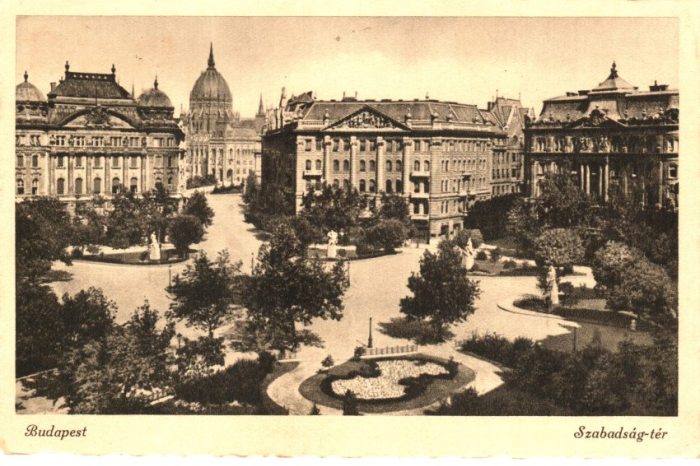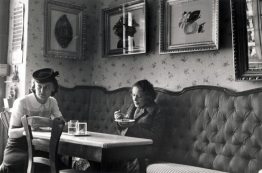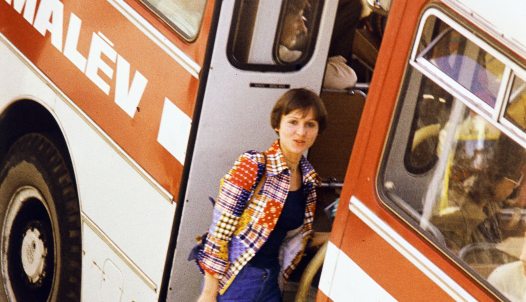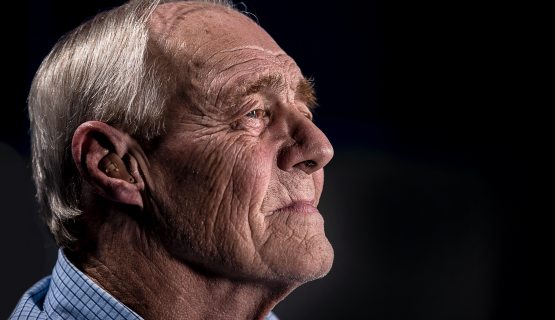A big New Year's Eve bank robbery in Pest – the action of three petty criminals ended in a tragic bloodbath
In 1903, at the age of 23, Géza Schäffer was employed by the Hungarian Commercial Bank of Pest, and ten years later he experienced a bank robbery at the bank's branch in Újpest. He was shot at but walked away unharmed, and was happy to change his name from Schäffer to Jójárt ("Lucky"). In 1931, Géza Jójárt was already working at the bank's branch in Szabadság Square, where he was attacked again by a young baker who tried – unsuccessfully – to rob the bank. The building was then equipped with an alarm bell but on 31 December 1934, another attempt was made to rob it. Géza Jójárt was again the chief cashier, but unfortunately this time he wasn't lucky at all. He was one of the victims of the New Year's Eve bank robbery 89 years ago.
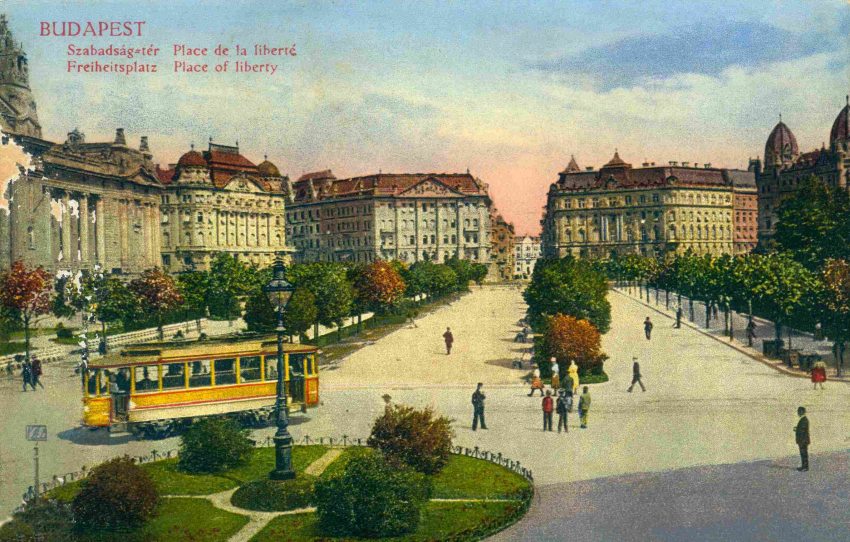
Three human lives
At around ten o'clock that day, two armed men broke into a bank at 16 Vécsey Street, near the Parliament building. "Hands up, don't move, or I shoot!" – shouted one of them, but after a stunned silence, panic broke out, to which the bandits responded with a series of actual shots. Imre Braun, the bank manager, managed to get out of the window to inform the police, but Géza Jójárt, who was about to hand over a thousand pengos to Miklós Szalay, the chief accountant of the National Child Protection League, was shot in the head. With his last remaining strength, he jumped out of the window onto the pavement, but collapsed there, his blood staining the asphalt red. He never regained consciousness. Inside, three other officers were wounded, one of whom – Frigyes Wirth, who had also recovered from malaria in the First World War – survived the attack with a thigh wound. The bullet could never be removed from József Klemm's abdomen, but he survived with it in his body, probably living in pain for the rest of his life. Dr. Imre Róth, 27, however, died of his abdominal wound in hospital two days later.
Miklós Szalay was the one who saved the others. He always arrived at his large withdrawals armed with a revolver, so he pulled the gun from his back pocket and fired in the direction of the attackers.
One of them was shot in the back, and they were so frightened by it that they ran away with the cash they had collected. On the way out, they found themselves face to face with József Benyák, a delivery boy who had been sent by his boss to the bank to change money and had just arrived at the door. That sealed his fate: he was shot dead. The fleeing bandits jumped into a car waiting for them in Vécsey Street and drove off. A car mechanic named Géza Mocsai even shot at them in the street while they were escaping the scene, and he claimed to have hit both the car and one of the robbers. By this time the bank's alarm was sounding loud, which Frigyes Wirth - already injured - managed to set off, and which was heard all the way to Bajcsy-Zsilinszky (then Kaiser Wilhelm) Road.
They drove too well, they were too muddy
The police arrived within minutes, but the witnesses were in shock and could offer little useful information. The crowd in Liberty Square, which had gathered at the news of the events, roared that Budapest was now a clean Chicago. Eventually, an 11-year-old boy playing in the square was able to give the most accurate description of the bandits, and a suitcase seller's testimony led to the identification of the license plate number of the vehicle, which turned out to have been stolen from Andrassy Avenue the night before. The car was found the same day, abandoned on a muddy dirt road near Kelenföld railway station, which laid the foundations for the success of the investigation. Although the robbers had removed their fingerprints, the police could be sure from the speed and efficiency of their getaway that at least one of them was an excellent driver, possibly an experienced car thief, which at the time narrowed the suspects down considerably.
It was mainly car mechanics who possessed such driving skills.
There were many false reports of suspicious individuals – one reportedly thought he recognized the attackers as three shaving Bulgarian gardeners – but the other key piece of information was a report from a member of the public. On Lehel Square, an eyewitness saw two men in the street looking strangely muddy and acting suspiciously, who, in the weather that day, could not have smeared themselves so badly on the paving in Budapest. So the police searched the car repair shops near Lehel Square and noticed that a mechanic called László Szepesi had called in sick that very day saying he had a toothache. It quickly turned out that Szepesi had already served two months for car theft the previous winter together with another mechanic, László Radovics. A carpenter's apprentice called Nándor Tari, who had also tried his hand at car mechanics, drove well, and wanted to be a racing driver, was in prison at the same time. Moreover, he had been an apprentice in the same workshop as József Benyák, who was shot during the robbery and who may have died at the entrance because he could have recognized one of the fleeing robbers.
Testimony and an incredible past
Later that night, all three were found and interrogated. Szepesi and Radovic were found in their homes, Tari was found in a pub in Angyalföld, drinking wine and singing merrily. During the interrogations, the police noticed that Radovics was moving strangely and had difficulty lifting his arms, so they called a doctor who examined him and found a pea-sized bullet wound on his shoulder blade, covered with a plaster. The bullet, according to the doctor, could have come from Miklós Szalay's gun, while a wound on Radovics' wrist matched the bullet wound fired by Géza Mocsai. The bank robber then broke down and gave a detailed confession, saying that the crime was Szepesi's idea, that he financed the guns and the disguise, and that he was waiting outside as the driver in the stolen car. Radovics and Tari entered the bank, Radovics shot the teller, and Tari shot the others. According to the statements of the three, weapons and fake moustaches were found hidden in several places.
The gang's previous robberies were also revealed, and these too showed a lot of ruthlessness but minimal success.
In 1931, they attacked the Klauzál Square branch of the Hungarian Counting and Currency Exchange Bank, where they also fired shots, but the safe door was slammed in front of them, so they left empty-handed. In the same year, they also attacked the Mária Street post office in Újpest, but the postmaster fired back and they fled. In 1932, they started with the Lipót körút branch of the Municipal Savings Bank, but the cashier threw a hole punch at the gunman, who dropped his weapon and they all fled. At the corner of Vadász Street and Bank Street, they continued by robbing a man, from whose bag they took 1,000 one-pengő banknotes and 2,000 pieces of 50-fillér coins. Finally, on June 30, 1934, they shot at a sub-officer of the Country Bank in Széchenyi Street and dragged off his briefcase, which contained only one letter. The greatest damage – unfortunately in terms of human lives – was therefore done in Szabadság Square.
"This year is off to a good start!”
It is absurd that it was their clumsiness that led to the tragedy. Radovic's testimony revealed that he caused the panic in Liberty Square by accidentally shouting in his excitement, "Everybody leave your places, or I'll shoot!"
In any case, the consequences were swift and decisive: the heads of the Budapest banks met as early as 2 January to decide on increased protection for their branches. The police were asked not to allow vehicles to wait outside the bank buildings, emergency alarms were installed everywhere, and security guards were reinforced.
On 11 February, the trial of the criminals began for three counts of murder in addition to their previous attempts. In the end, Tari was proven right, when he concluded his interrogation with the words, "This year is off to a good start! I'll get a necktie, won't I, Captain?" On 22 January 1936, all three criminals were hanged in the courtyard of the Collector's Prison.
Resources:
https://mnl.gov.hu/a_het_dokumentuma/bankrablas_szilveszterkor.html
https://horthykorszak.blog.hu/2017/02/25/szombat_esti_remalom_a_szabadsag_teri_bankrablas
https://welovebudapest.com/cikk/2018/01/02/hires-budapesti-rejtelyek-hogyan-buktak-le-a-30-as-evek-leghiresebb-bankrabloi/
